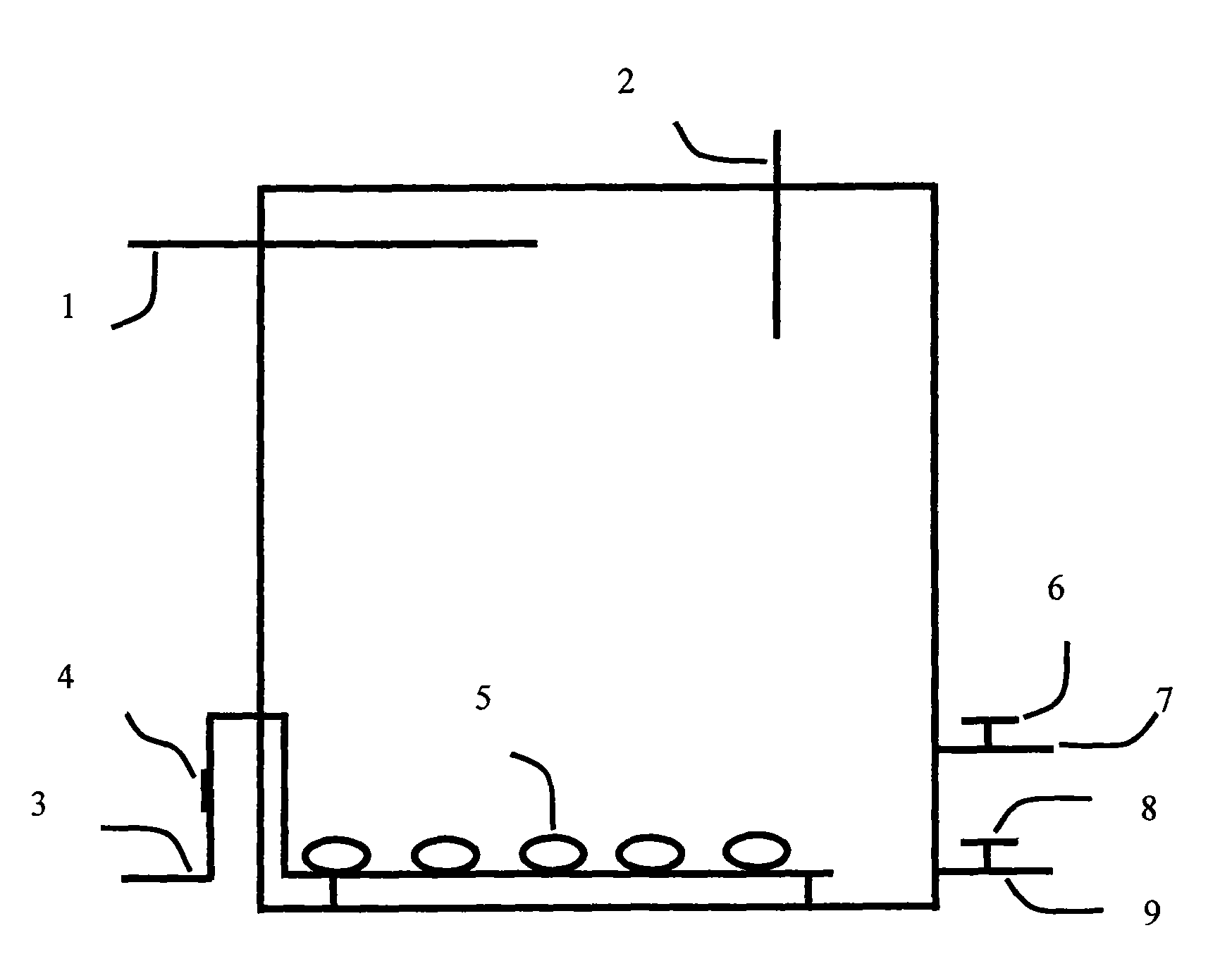Method for processing preserved szechuan pickle waste water by compound bacterial flora
A technology of compound flora and mustard wastewater is applied in the field of environmental microorganisms, which can solve the problems of affecting the living environment of surrounding residents, unfavorable large-scale treatment of wastewater, and difficulty in mustard wastewater, and achieves good sludge settling performance and good phosphorus and nitrogen removal effects. , good treatment effect
- Summary
- Abstract
- Description
- Claims
- Application Information
AI Technical Summary
Problems solved by technology
Method used
Image
Examples
Embodiment 1
[0029] Embodiment 1, the isolation of bacterial strain in seawater and saline lake water sample
[0030]Mix the bottled water sample evenly, and filter it with a filter (sterile) equipped with a 0.22 μm microporous membrane under sterile conditions, and enrich the bacteria on the filter; the amount of enriched water sample reaches 20-30ml , carefully remove the filter membrane, put it into a 3ml liquid medium test tube, and oscillate to separate the bacteria from the filter membrane; after mixing, make an appropriate gradient dilution, draw 100 μl of liquid onto the 2216 medium plate, and spread evenly, each gradient Spread 2 plates and culture them statically at 25°C and 37°C respectively. Randomly select a single colony, streak the plate repeatedly until the color, size and shape of the colonies on the plate are completely consistent, and record the morphological characteristics of the colony. After identification, Halomonas and Seabacteria listed in Table 1 were obtained. ...
Embodiment 2
[0031] Embodiment 2, the isolation of bacterial strain in the water sample of mustard mustard factory sewage discharge outlet
[0032] Mix the bottled water sample and dilute it with mustard mustard wastewater with pH 7.0 and filter sterilization; select the dilution factor as 10 4 and 10 6 Draw 100 μl of liquid onto the medium plate of mustard mustard wastewater (adjust the pH to 7.0 by adding 2% agar, and sterilize at 121°C for 30 minutes), and coat evenly. Each gradient is coated with 2 Plates were cultured statically at 25°C and 37°C, respectively. Randomly select a single colony, streak the plate repeatedly until the color, size and shape of the colonies on the plate are completely consistent, and record the morphological characteristics of the colony. After identification, the Bacillus and Lemonococcus listed in Table 1 were obtained.
Embodiment 3
[0033] Embodiment 3, the isolation of bacterial strain in the sludge sample of mustard vegetable factory sewage discharge outlet
[0034] Put 2g of the mud sample collected from the sewage discharge outlet of Cixi mustard plant in Zhejiang into 50ml of filtered mustard wastewater, add glass beads to oscillate and break up, take the supernatant and dilute it with pH 7.0 and filter-sterilized mustard wastewater; choose the dilution factor for 10 4 and 10 6 Draw 100 μl of liquid onto the medium plate of mustard mustard wastewater (adjust the pH to 7.0 by adding 2% agar, and sterilize at 121°C for 30 minutes), and coat evenly. Each gradient is coated with 2 Plates were cultured statically at 25°C and 37°C, respectively. Randomly select a single colony, streak the plate repeatedly until the color, size and shape of the colonies on the plate are completely consistent, and record the morphological characteristics of the colony. After identification, the Candida bacteria listed in ...
PUM
 Login to View More
Login to View More Abstract
Description
Claims
Application Information
 Login to View More
Login to View More - R&D
- Intellectual Property
- Life Sciences
- Materials
- Tech Scout
- Unparalleled Data Quality
- Higher Quality Content
- 60% Fewer Hallucinations
Browse by: Latest US Patents, China's latest patents, Technical Efficacy Thesaurus, Application Domain, Technology Topic, Popular Technical Reports.
© 2025 PatSnap. All rights reserved.Legal|Privacy policy|Modern Slavery Act Transparency Statement|Sitemap|About US| Contact US: help@patsnap.com

